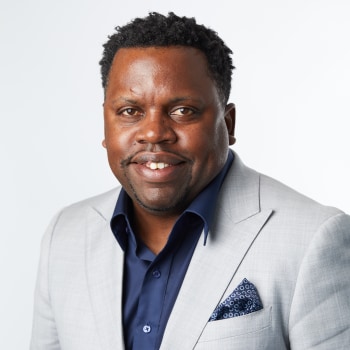Digital HR: Platforms, people, and work has been saved

Digital HR: Platforms, people, and work 2017 Global Human Capital Trends
28 February 2017
HR is being pushed to take on a larger role in helping organizations to be digital, not just do digital. The process starts with digital transformation in HR, as HR leaders explore new technologies, platforms, and ways of working.
Introduction
Learn More
View 2017 Global Human Capital Trends
Create and download a custom PDF
Explore the infographic
Watch the video
HR is undergoing rapid and profound change. Once viewed as a support function that delivered employee services, HR is now being asked to help lead the digital transformation sweeping organizations worldwide. We see this change taking place in three areas:
- Digital workforce: How can organizations drive new management practices (which we call “digital DNA” 1), a culture of innovation and sharing, and a set of talent practices that facilitate a new network-based organization?2
- Digital workplace: How can organizations design a working environment that enables productivity; uses modern communication tools (such as Slack, Workplace by Facebook, Microsoft Teams, and many others); and promotes engagement, wellness, and a sense of purpose?
- Digital HR: How can organizations change the HR function itself to operate in a digital way, use digital tools and apps to deliver solutions, and continuously experiment and innovate?
This shift is happening rapidly, as HR leaders are being pushed to take on a larger role in helping to drive the organization to “be digital,” not just “do digital.”
- Fifty-six percent of companies we surveyed this year are redesigning their HR programs to leverage digital and mobile tools.
- Fifty-one percent of companies are currently in the process of redesigning their organizations for digital business models.
- Thirty-three percent of surveyed HR teams are using some form of artificial intelligence (AI) technology to deliver HR solutions, and 41 percent are actively building mobile apps to deliver HR services.
Over the last five years, the HR discipline has undergone a rapid evolution. Three years ago, we wrote about HR’s “race to the cloud,” as companies rushed to replace legacy talent systems with integrated HR platforms. Two years ago, we characterized HR as a function “in need of a makeover,” as companies focused on reskilling HR professionals, integrating the organization, and implementing analytics. This year, as digital management practices and agile organization design become central to business thinking, HR is changing again, focusing on people, work, and platforms. We call the resulting set of HR practices “digital HR.”
Digital HR builds upon years of effort. In the 1960s and 1970s, HR focused on personnel operations, automating transactions, and maintaining a sound employee system of record. In the 1980s, HR was redesigned as a “service organization”; centers of expertise began to manage core talent practices, service centers handled individual needs, and HR business partners began to be embedded in the business. In the 1990s and early 2000s, HR was redesigned again around integrated talent management, often accompanied by the implementation of new systems for recruiting, learning, performance management, and compensation.
Today, HR’s focus has shifted toward building the organization of the future. Companies are hiring young, digitally savvy workers who are comfortable doing things themselves and sharing information in a transparent way. They want an integrated, digital experience at work—one designed around teams, productivity, and empowerment—and HR is expected to deliver it.

Rewriting the rules for digital HR
While none of HR’s prior responsibilities has gone away, HR departments today are under pressure to rewrite the rules by redesigning talent practices, from recruiting to leadership to performance management; by experimenting with digital apps; and by building a compelling employee experience. All this must be done with a focus on redesigning the organization around teams, implementing analytics and organizational network analysis, and driving a global focus on diversity, culture, learning, and careers.
Digital HR is built on innovation and experimentation. As companies become networks and the employee base becomes both older and younger, new approaches are needed in almost every HR domain. Companies often now use hackathons, rapid design groups, and both prototypes and “minimally viable products” to roll out pilot HR programs.
Design thinking has gone mainstream. Rather than deliver HR programs designed around legacy business processes, HR teams now study employee needs across all segments: hourly workers, salaried employees, managers, executives. Instead of traditional career models, HR is offering journey maps and replacing complex processes with local practices based on an integrated platform. (See the Ford case study in the “Employee experience” chapter of this report.)
Digital HR requires digital technology expertise. While cloud-based HR systems brought tremendous value to organizations, they are no longer enough. Today, HR teams are rethinking their solutions in the context of workflow-embedded apps; Royal Bank of Canada, Deutsche Telekom, Ford, and others now have digital design teams within the HR department.3 This means using the cloud as a “platform” and building on it for company-specific needs.
The vendor market is reinventing itself: A new breed of HR products and solutions is coming to market, many built around mobile apps, AI, and consumer-like experiences.4 These tools are enabling HR to become near-real time. Companies such as SAP and Reliance Jio now monitor real-time metrics on engagement, recruiting, turnover, and other measures to help business leaders make decisions more quickly.5 IBM has begun to use AI tools to give leaders regular pulses on how their teams are doing, helping them see patterns that can get in the way of performance or retention and prompting them to proactively address them through coaching, recognition, or community building.6
As digital HR takes hold and HR organizations become more platform based, business partners are becoming more digitally empowered and able to spend more time in the business. Our latest research shows that high-performing HR teams have fewer generalists and more senior HR business partners, forcing many HR departments to reskill their HR staff and give them new roles as senior consultants, leveraging the digital tools in place.7
News tools and expanded transparency facilitate digital HR
The role of AI, cognitive processing, embedded analytics, and mobile technology is changing the way people programs work.8
- Wade and Wendy, a chatbot service, brings AI and chatbots to recruitment and career planning.9 Wade helps employees with their career strategies and shows them career opportunities in the company. Wendy talks with candidates and helps them understand the company’s culture, job opportunities, and hiring process.
- Firstjob’s chatbot Mya can eliminate up to 75 percent of the questions people have during the recruiting process.10
- Switch, a new app for recruiting, helps candidates find jobs by giving them a Tinder-like experience for job search and recruitment.11
- Software vendor Unitive uses AI to write job descriptions based on actual discussions about the job, and can algorithmically identify gender, race, or generational bias to reduce unconscious bias in recruiting.12 Another example is SuccessFactors, which now provides similar tools in its enterprise talent management application.
Transparency is becoming a standard in the world of HR and talent. In compensation, Glassdoor’s Know Your Worth13 and LinkedIn’s Salary were launched this year, joining vendors such as Salary.com and Payscale, which crowdsource compensation data for anyone to see. By collecting anonymous data on tens of thousands to millions of salaries, these tools let workers compare their salary against those for similar jobs by city, tenure, industry, and even company.
Lessons from the front lines
IBM, a global company with over 400,000 people, is leading the transition to digital HR, using a wide variety of experiments to drive new digital HR solutions.14
After an employee hackathon, the company reinvented its performance management process by building Checkpoint, a new feedback process that is dramatically increasing engagement, alignment, and goal management.15
To drive continuous learning, IBM shut down its traditional global learning management system and replaced it with a new digital learning platform. The new system enables employees to publish any content they feel is important, curates and recommends training based on role and experience, and integrates external learning from across the Internet.
To empower employees to take greater control of their career management, IBM developed a proprietary career management system that helps people find new jobs and recommends new assignments by looking at the patterns of their peers.
Within HR, IBM leveraged the company’s AI investments in Watson to pilot the use of CHIP (Cognitive Human Interface Personality), a cognitive assistant that can handle a wide range of HR-related questions. CHIP is an intelligent chatbot (available through computer, text messages, and soon voice) that recognizes the 200 most frequently asked employee questions (such as “Tell me about my vacation benefits” or “Find me an expert in digital marketing”) and becomes smarter all the time. The system has already reduced call center time and is proving popular with employees.16
Royal Bank of Canada (RBC) is reinventing its employee experience through a complete digital focus. The company set up a digital HR development team, partnering with IT for infrastructure and security, to deploy a new “preboarding” application. The app, called Embark, helps employees learn about their new jobs, embrace the company culture, and meet their teams online. To build on this success, RBC plans to develop Compelling Careers, an end-to-end set of apps and tools that forms a digital solution for career development, job transition, and continuous learning.17
Start here
- Redefine your mission: HR today must define its role as the team that helps management and employees rapidly transform and adapt to the digital way of thinking. Familiarize yourself with networked organization structures, organizational network analysis, and digital leadership models.
- Upgrade core technology: Replace legacy systems with an integrated cloud platform for a sound digital infrastructure. Upgrade old tools for learning, recruiting, and performance management, and bring in systems that are easy for employees to use.
- Develop a multiyear HR technology strategy: In today’s rapidly changing HR technology world, it’s important to build a multiyear strategy that includes cloud enterprise resource planning (ERP) platforms, apps, analytics, and a range of tools for AI, case management, and other solutions.
- Build a digital HR team: Dedicate teams to explore new vendor solutions and build others, and consider AI solutions to improve service delivery, recruiting, and learning. Companies such as RBC and Deutsche Telekom now have digital design teams in HR that work with IT to design, prototype, and roll out digital apps.18
- Organize HR into networks of expertise with strong business partners: Rethink your HR organization model to focus efforts on the employee experience, analytics, culture, and the new world of learning. Make sure these teams communicate well: High-performing HR teams share leading practices and know what the other teams are doing.
- Make innovation a core strategy within HR: Push yourself to reinvent and innovate in every people practice. Many organizations are now using new performance management practices built around design sessions and hackathons. Investigate new innovations in recruiting, including using data to find people who resemble high performers in the company.
- Rotate younger people into the HR profession: Regularly rotate people from the business into and out of HR, use innovation teams to reverse-mentor senior leaders, and recruit new MBAs to bring people with analytics skills into the profession.
- Benchmark: Visit other companies to see what they are doing. HR teams can bring in outside speakers, join research membership programs, and continually look for new ideas to foster innovation. Today’s leading practices come from innovative ideas developed around an organization’s culture and business needs, not a book.
Fast forward
HR has a critical opportunity to help lead the transformation to a digital enterprise. In the next several years, HR teams that embrace digital platforms to take up the dual challenge of transforming HR operations on the one hand, and transforming the workforce and the way work is done on the other, will be game changers. HR leaders who “lean into” new technologies, platforms, and ways of working, and who explore and invest in enabling agility through constant reinvention, will be strongly positioned to have an impact on business results and employee experience.

Deloitte’s Human Capital professionals leverage research, analytics, and industry insights to help design and execute the HR, talent, leadership, organization, and change programs that enable business performance through people performance. Visit the Human Capital area of www.deloitte.com to learn more.
© 2021. See Terms of Use for more information.






